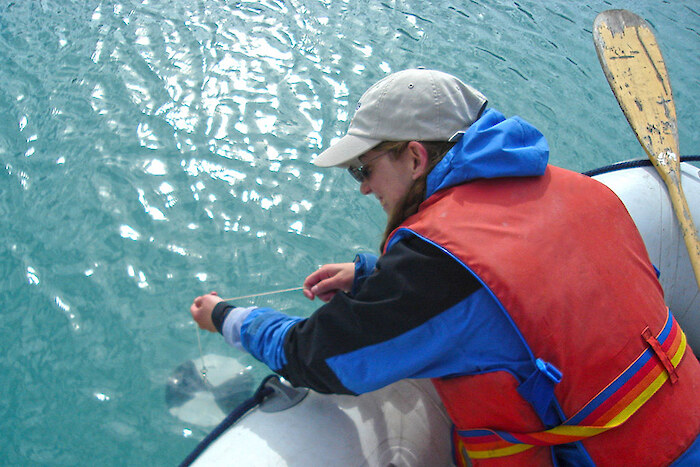
Water clarity is a measure of how much light penetrates though the water column. Water clarity is dependent upon the amount of particles (e.g. suspended sediment and plankton) and colored organic matter present. Clear water is especially critical for seagrasses since, like all plants, they need to be able to absorb the sun’s rays to grow. Excess sediment in the water reduces water clarity by blocking sunlight to seagrasses. Fish and other organisms in the water need aquatic grass habitat to thrive.
How is it measured?
Water clarity is measured using a black and white disc called a Secchi disk, which is lowered into the water until you can’t differentiate the black and white quarters of the disc anymore. This is the Secchi depth, and is an indicator of how clear the water is. Water clarity was measured at approximately 23 stations up to 30 times during the periods of interest (January to December).
Threshold levels
| Criteria Threshold | Overall Score Calculation |
|---|---|
| > 2.28 m | 90% - 100% |
| 2.12 - 2.28 m | 80% - 90% |
| 1.95 - 2.12 m | 70% - 80% |
| 1.80 - 1.95 m | 60% - 70% |
| < 1.85 m | < 60% |
